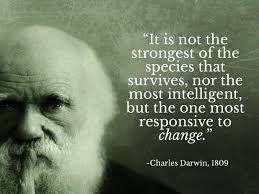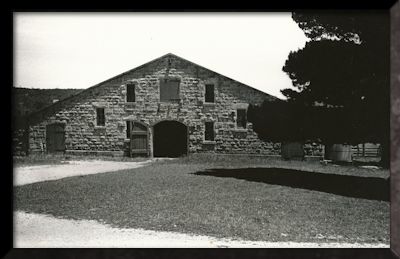
Charles Darwin visits Wallerawang
In 1836, HMS Beagle arrived at Sydney Cove carrying the naturalist Charles Darwin. Darwin spent 18 days in New South Wales, where he attempted to gain a little understanding of the geology and natural history of Australia. Of particular interest, was one day he spent as a guest at the Wallerawang Homestead. While there he had his first encounter with unique Australian species such as the platypus and visited the Wolgan Valley, which left him struck by its sheer size and baffled by its formation.
On 12th January 1836, towards the end of a five year voyage, HMS Beagle arrived at Sydney Cove and Charles Darwin set foot on Australian soil for the first time.
Though Darwin’s visit to Australia was but a brief stop on an epic journey, whose primary focus had been a survey of the continent of South America, it is not to say that it was of little significance. Darwin spent just eighteen days in New South Wales before the Voyage of the Beagle continued on to Tasmania, but in the brief period available to him he wasted no time in heading inland in the direction of Bathurst, as he attempted to gain a little understanding of the geology and natural history of Australia.
Of particular interest, in the light of these aims, was one day he spent as a guest at the Wallerawang Homestead. A large pastoral property, granted to the free settling Scotsman James Walker on his arrival in the colony in 1823, Wallerawang was one of the first to be established west of the Blue Mountains. Following the marriage of Edwin Barton, engineer-in-chief of Lithgow’s Zig Zag railway, to Walker’s daughter, the homestead’s name was later changed to Barton Park. In 1979 the damning of the Coxs river submerged the entire homestead, leaving just a few rescued sandstone blocks from the original house in which Darwin stayed.
After spending the night of 18th January at Wallerawang, Darwin accepted an invitation to hunt for kangaroos. At this point in his life - he was 26 years old at the time - Darwin was a keen hunter, both at home in England and on his travels. However, he was, as this voyage wore on, beginning to appreciate the pleasure of observation and learning more highly than the sport itself. He was, therefore, not too downcast when the expedition failed to encounter a single kangaroo. There was plenty else to pique his interest.
During the course of the hunting expedition Darwin and his companions headed north-west of Wallerawang as far as the Wolgan Valley, a place which left him struck by its sheer size and more than a little baffled by its formation. This caused him great consternation and his notes from 19th January contain page after page of description of this valley and differing theories as to how it was created. Though initially correctly attributing its formation to gradual erosion by water, the sheer scale of the valley led him to conclude that this idea was ‘preposterous’ and caused him, mistakenly, to seek alternative explanations.
Despite failing in their primary objective of kangaroo hunting, in his diary, Darwin is able to describe his first encounter with another of Australia’s unique creatures:
The Grey-hounds pursued a Kangaroo Rat into a hollow tree from out of which we dragged it: it is an animal, as big as a Rabbit, but with the figure of a Kangaroo.
As interesting as this encounter was in its own right, and it was after all the naturalist’s first opportunity to inspect an Australian marsupial in detail, of perhaps more interest to Darwin was the effect of interaction between native and European species. He noted the rapid decline that had taken place in the numbers of emus and kangaroos and the destructive role that the English Greyhound had played on species ill equipped to deal with it. In his journal, published in 1839, he went further and stated:
It may be long before these animals are altogether exterminated, but their doom is fixed.
While, happily, the kangaroo and emu are still very much with us, this gloomy prediction has come true for numerous native Australian species, including the Eastern Bettong, a species closely related to the ‘Kangaroo Rat’ described by Darwin.
On returning from the day’s hunting, Darwin took a stroll to Coxs River, where he encountered the platypus, an animal even more extraordinary than the kangaroo rat.
I … had the good fortune to see several of the famous Ornithorhynchus paradoxus. They were diving and playing about the surface of the water, but showed so little of their bodies, that they might easily have been mistaken for water-rats.
His encounter with the platypus leads on to further consideration of the evident similarities between Australian fauna and quite clearly different species found elsewhere in the world. He goes on to state:
Earlier in the evening I had been lying on a sunny bank & was reflecting on the strange character of the Animals of this country as compared to the rest of the World. A Disbeliever in everything beyond his own reason, might exclaim, “Surely two distinct Creators must have been [at] work; their object however has been the same & certainly in each case the end is complete”.
Then, in describing how he observed the pitfall of a lion-ant identical to that of a European ant, but half its size, he continues:
Would any two workmen ever hit on so beautiful, so simple & yet so artificial a contrivance? I cannot think so.- The one hand has worked all over the world.
It is worth noting that when making this observation Darwin had in the previous few hours seen Australian magpies that to a strong degree resembled their European counterparts, a platypus that at first glance appeared like a water rat, and a rabbit sized kangaroo that indeed behaved much like a rabbit, despite all of these creatures clearly having been created to quite different specifications.
The question is how to interpret Darwin’s comments. If the ‘one hand’ to which Darwin refers is the force of nature then we could be seeing here the first glimpse of his famous ‘Theory of Evolution’. It could conceivably also refer to God, and so the ambiguity remains. With Darwin’s family still holding out hope that he would enter the ministry on his return to England, this ambiguity appears deliberate.
